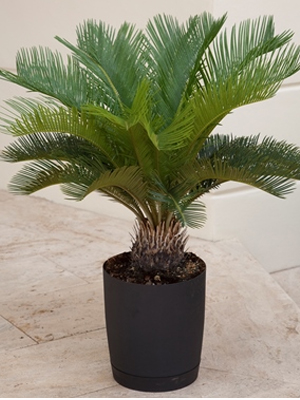Sago Palm: Prehistoric Plant Adds Pizzazz to the Modern Home
Stylish and easy to grow are two attributes indoor gardeners look for in a houseplant. The architecturally appealing sago palm (Cycas revoluta) features both. Technically a cycad, this prehistoric plant makes an impressive addition to any indoor garden.
“Sago palms are slow-growing plants that have survived largely unchanged since the time of the dinosaurs,” says Justin Hancock, Costa Farms garden expert. “That means they will readily adapt to life in your well-lit living room. In addition to being easy to care for, the palm-like fronds add a graceful, elegant look to many indoor décor styles, such as tropical, Victorian, country, cottage and modern.
Given the fact that they’re an ancient plant, it’s surprising that it was only recently that sago palms have hit the indoor garden scene. “Costa Farms was one of the first companies in the U.S. to try it as an indoor plant, and once we realized that it worked well indoors, the plant really took off,” says Hancock.
To have the best luck growing sago palms indoors, keep the following growing tips in mind.

(All Photos this article, Costa Farms)

Provide bright light
Though sago palms tolerate low light, the fronds will yellow and drop frequently. Place the plant in a high light location, such as in an eastern window where it can get bright morning sun. Or put the plant under full-spectrum lighting.
Plant in well-drained soil
Sago palms quickly rot if the roots sit in standing water for an extended period of time. Plant in a potting soil that contains perlite or pumice, and make sure to never let the pot sit in water. Sago palms only require repotting every couple of years.

Watering sago palms
Water sago palm when the top inch of soil has dried out. Avoid overwatering, as this can lead to soggy soil and root rot.
Fertilize
Feed sago palm every three months with an all-purpose organic fertilizer designed for foliage plants.
Pruning sago palm
Wearing gardening gloves use plant clippers to prune out fronds when they yellow. The fronds may look delicate, but they are actually stiff and prickly.
Caution
“Sago palm is sometimes considered controversial as a houseplant, because it is poisonous,” says Hancock. “So it’s not a plant I’d recommend having around if you have children or pets that like to nibble.”





